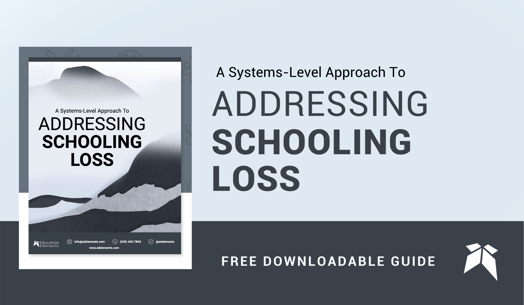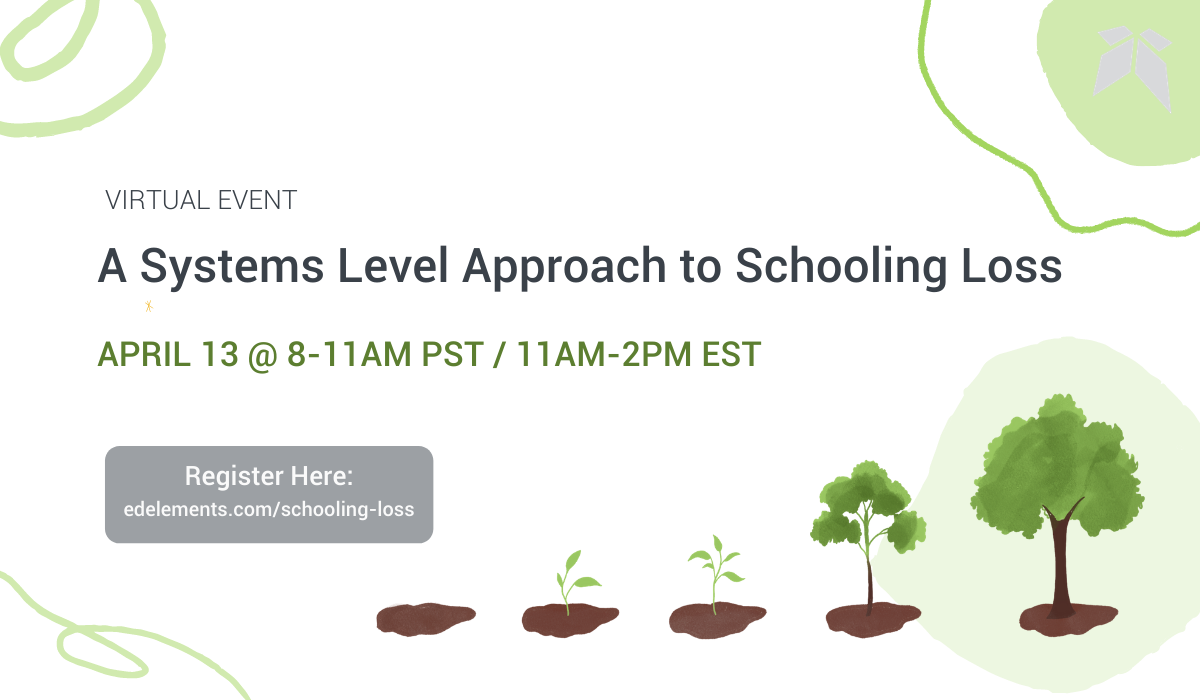Our team has spent months discussing the best term to use to describe the challenge education currently faces. We brought it up in team meetings, shared it with district partners, and sought out recent publications on the subject. We came together around five beliefs that helped us choose the term “schooling loss”:
-
Educators face systems-level challenges due to the pandemic; they are larger than any one person or group of people.
-
It is important that any discussion of “loss” explicitly avoids suggesting blame, especially to students, teachers, and families.
-
The scale of this challenge is unprecedented, impacting an entire generation of students. It requires us to redesign systems and consider impact over the course of years.
-
While the pandemic has led to some positive realizations, this is not enough to justify framing this challenge as anything but a net negative. Studies have consistently shown the pandemic’s harmful impact on students’ academic learning and mental health. One report also noted that as many as 3 million students may have experienced little to no structured schooling since March 2020.
-
Academic learning is not the only thing that has been lost. Students have lost out on time with their classmates and teachers, extracurricular activities, and the whole child support that schools provide.
We believe that the term “schooling loss” better reflects these beliefs than the more widely-used term “learning loss.” Schooling better suggests a systems-level focus and includes multiple stakeholders, making it less likely any one person or group will be singled out. Schooling is broad, it includes learning as well as social and emotional supports, extracurricular activities, athletics, and nutrition services; all things that many students have lost to some extent in the last year.
Language is critically important, especially when discussing an issue as complex and challenging as schooling loss. We hope this explanation provides insight into the evolution of our thoughts on this matter and sparks conversations that will continue to help all of us better meet the needs of our students.
Schooling loss is a phenomenon of the pandemic
Schooling loss is a phenomenon of the pandemic. For our students and many adults, the pandemic has been the most significant collective event of our lifetimes and its wide-ranging impact is yet to be fully understood. That’s what makes schooling loss such a challenging issue. We believe it exists in some form; but the size, contours, and complexity of that form are unclear and look different in each district and community. Furthermore, we may not have a full understanding of schooling loss for months, if not years. Whether we anticipate needing assessment data, reports from school counselors, observational trends from educators, or even longitudinal outcome analysis; any of these measures will not be available in time to plan for the upcoming school year. It is understandable for anyone to feel overwhelmed by the sheer amount of ambiguity that surrounds this issue.
This ambiguity may also make us question how we might even begin to plan for schooling loss. Many educators were trained in backward planning, to set specific goals and design lessons and unit pacing to meet those goals. It makes sense that many of us hesitate to jump into planning for schooling loss when we know we don’t have the data necessary to set those specific goals. And the need to plan to address the possibly wide-ranging learning needs of our students in the upcoming school year is as urgent as ever. The ambiguity surrounding schooling loss cannot be a reason to wait, but rather, it requires us to shift our approach to planning.
What is our approach to schooling loss?
Addressing schooling loss is a complex, new, and unknown reality that all districts must navigate. While selecting interventions and solutions seems like an obvious first step, we encourage you to step back and make time for reflection before diving into solutions. We approach planning to address schooling loss in three parts, beginning by looking at the big picture and progressively getting more detailed and tactical.
-
Discovering a Path Forward: The first priority is to gain clarity around what we know and begin to recognize the different pathways that we might take to address schooling loss.
-
Reflecting on Current and Future States: The second step is to reflect on where you are and where you want to go.
-
Aligning Solutions to Strengths: The third step is to select or deepen solutions based on organizational and workforce strengths.
Join our upcoming virtual event to build the start of a roadmap and the roles that might drive the work to address schooling loss in your school or district.





